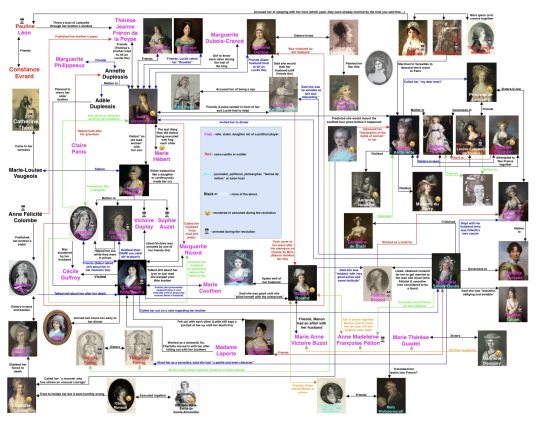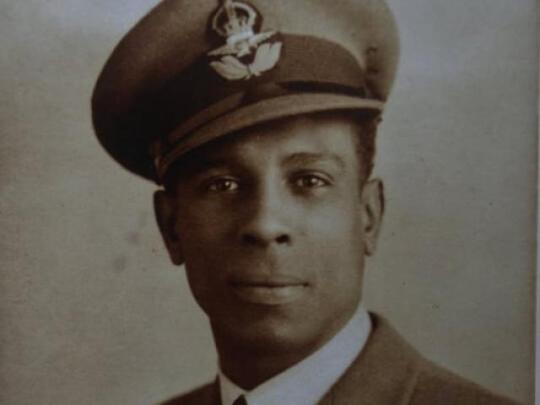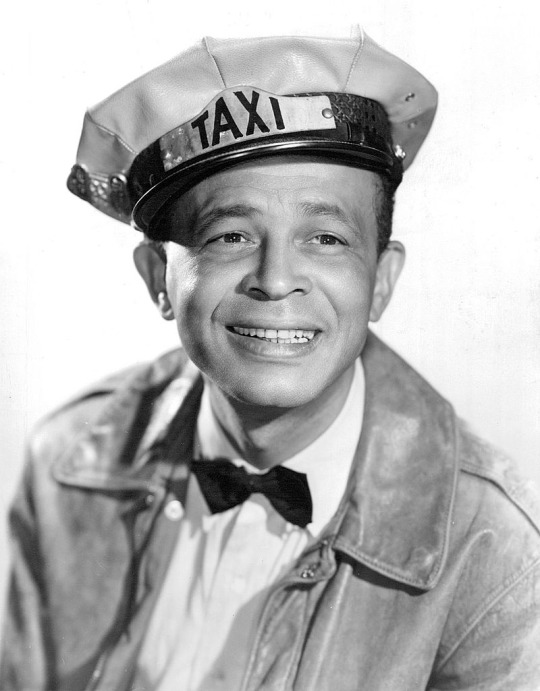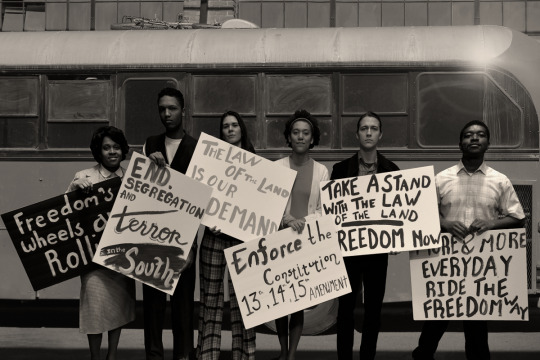#Lafayette 1961
Explore tagged Tumblr posts
Text
Adrienne hiding Lafayette from the police so he can go to America:
#la fayette (1961)#adrilaf#adrienne de lafayette#adrienne de noailles#lafayette#marquis de lafayette#meme#crack#memes#history#amrev#amrev crack#american revolution
81 notes
·
View notes
Text


//She’s so pretty 😍
15 notes
·
View notes
Text

I decided to try this but for the girlies instead.
Are you sure want to click on ”keep reading”?
For Pauline Léon marrying Claire Lacombe’s host, see Liberty: the lives of six women in Revolutionary France (2006) by Lucy Moore, page 230
For Pauline Léon throwing a bust of Lafayette through Fréron’s window and being friends with Constance Evrard, see Pauline Léon, une républicaine révolutionnaire (2006) by Claude Guillon.
For Françoise Duplay’s sister visiting Catherine Théot, see Points de vue sur l’affaire Catherine Théot (1969) by Michel Eude, page 627.
For Anne Félicité Colombe publishing the papers of Marat and Fréron, see The women of Paris and their French Revolution (1998) by Dominique Godineau, page 382-383.
For the relationship between Simonne Evrard and Albertine Marat, see this post.
For Albertine Marat dissing Charlotte Robespierre, see F.V Raspail chez Albertine Marat (1911) by Albert Mathiez, page 663.
For Lucile Desmoulins predicting Marie-Antoinette would mount the scaffold, see the former’s diary from 1789.
For Lucile being friends with madame Boyer, Brune, Dubois-Crancé, Robert and Danton, calling madame Ricord’s husband ”brusque, coarse, truly mad, giddy, insane,” visiting ”an old madwoman” with madame Duplay’s son and being hit on by Danton as well as Louise Robert saying she would stab Danton, see Lucile’s diary 1792-1793.
For the relationship between Lucile Desmoulins and Marie Hébert, see this post.
For the relationship between Lucile Desmoulins and Thérèse Jeanne Fréron de la Poype, and the one between Annette Duplessis and Marguerite Philippeaux, see letters cited in Camille Desmoulins and his wife: passages from the history of the dantonists (1876) page 463-464 and 464-469.
For Adèle Duplessis having been engaged to Robespierre, see this letter from Annette Duplessis to Robespierre, seemingly written April 13 1794.
For Claire Panis helping look after Horace Desmoulins, see Panis précepteur d’Horace Desmoulins (1912) by Charles Valley.
For Élisabeth Lebas being slandered by Guffroy, molested by Danton, treated like a daughter by Claire Panis, accusing Ricord of seducing her sister-in-law and being helped out in prison by Éléonore, see Le conventionnel Le Bas : d'après des documents inédits et les mémoires de sa veuve, page 108, 125-126, 139 and 140-142.
For Élisabeth Lebas being given an obscene book by Desmoulins, see this post.
For Charlotte Robespierre dissing Joséphine, Éléonore Duplay, madame Genlis, Roland and Ricord, see Mémoires de Charlotte Robespierre sur ses deux frères (1834), page 76-77, 90-91, 96-97, 109-116 and 128-129.
For Charlotte Robespierre arriving two hours early to Rosalie Jullien’s dinner, see Journal d’une Bourgeoise pendant la Révolution 1791–1793, page 345.
For Charlotte Robespierre physically restraining Couthon, see this post.
For Charlotte Robespierre and Françoise Duplay’s relationship, see Mémoires de Charlotte Robespierre sur ses deux frères (1834) page 85-92 and Le conventional Le Bas: d’après des documents inédits et les mémoires de sa veuve (1902) page 104-105
For the relationship between Charlotte Robespierre and Victoire and Élisabeth Lebas, see this post.
For Charlotte Robespierre visiting madame Guffroy, moving in with madame Laporte and Victoire Duplay being arrested by one of Charlotte’s friends, see Charlotte Robespierre et ses amis (1961)
For Louise de Kéralio calling Etta Palm a spy, see Appel aux Françoises sur la régénération des mœurs et nécessité de l’influence des femmes dans un gouvernement libre (1791) by the latter.
For the relationship between Manon Roland and Louise de Kéralio Robert, see Mémoires de Madame Roland, volume 2, page 198-207
For the relationship between Madame Pétion and Manon Roland, see Mémoires de Madame Roland, volume 2, page 158 and 244-245 as well as Lettres de Madame Roland, volume 2, page 510.
For the relationship between Madame Roland and Madame Buzot, see Mémoires de Madame Roland (1793), volume 1, page 372, volume 2, page 167 as well as this letter from Manon to her husband dated September 9 1791. For the affair between Manon and Buzot, see this post.
For Manon Roland praising Condorcet, see Mémoires de Madame Roland, volume 2, page 14-15.
For the relationship between Manon Roland and Félicité Brissot, see Mémoires de Madame Roland, volume 1, page 360.
For the relationship between Helen Maria Williams and Manon Roland, see Memoirs of the Reign of Robespierre (1795), written by the former.
For the relationship between Mary Wollstonecraft and Helena Maria Williams, see Collected letters of Mary Wollstonecraft (1979), page 226.
For Constance Charpentier painting a portrait of Louise Sébastienne Danton, see Constance Charpentier: Peintre (1767-1849), page 74.
For Olympe de Gouges writing a play with fictional versions of the Fernig sisters, see L’Entrée de Dumourier à Bruxelles ou les Vivandiers (1793) page 94-97 and 105-110.
For Olympe de Gouges calling Charlotte Corday ”a monster who has shown an unusual courage,” see a letter from the former dated July 20 1793, cited on page 204 of Marie-Olympe de Gouges: une humaniste à la fin du XVIIIe siècle (2003) by Oliver Blanc.
For Olympe de Gouges adressing her declaration to Marie-Antoinette, see Les droits de la femme: à la reine (1791) written by the former.
For Germaine de Staël defending Marie-Antoinette, see Réflexions sur le procès de la Reine par une femme (1793) by the former.
For the friendship between Madame Royale and Pauline Tourzel, see Souvernirs de quarante ans: 1789-1830: récit d’une dame de Madame la Dauphine (1861) by the latter.
For Félicité Brissot possibly translating Mary Wollstonecraft, see Who translated into French and annotated Mary Wollstonecraft’s Vindication of the Rights of Woman? (2022) by Isabelle Bour.
For Félicité Brissot working as a maid for Louise Marie Adélaïde de Bourbon, see Mémoires inédites de Madame la comptesse de Genlis: sur le dix-huitième siècle et sur la révolution française, volume 4, page 106.
For Reine Audu, Claire Lacombe and Théroigne de Méricourt being given civic crowns together, see Gazette nationale ou le Moniteur universel, September 3, 1792.
For Reine Audu taking part in the women’s march on Versailles, see Reine Audu: les légendes des journées d’octobre (1917) by Marc de Villiers.
For Marie-Antoinette calling Lamballe ”my dear heart,” see Correspondance inédite de Marie Antoinette, page 197, 209 and 252.
For Marie-Antoinette disliking Madame du Barry, see https://plume-dhistoire.fr/marie-antoinette-contre-la-du-barry/
For Marie-Antoinette disliking Anne de Noailles, see Correspondance inédite de Marie Antoinette, page 30.
For Louise-Élisabeth Tourzel and Lamballe being friends, see Memoirs of the Duchess de Tourzel: Governess to the Children of France during the years 1789, 1790, 1791, 1792, 1793 and 1795 volume 2, page 257-258
For Félicité de Genlis being the mistress of Louise Marie Adélaïde de Bourbon’s husband, see La duchesse d’Orléans et Madame de Genlis (1913).
For Pétion escorting Madame Genlis out of France, see Mémoires inédites de Madame la comptesse de Genlis…, volume 4, page 99.
For the relationship between Félicité de Genlis and Louise de Kéralio Robert, see Mémoires de Madame de Genlis: en un volume, page 352-354
For the relationship between Félicité de Genlis and Germaine de Staël, see Mémoires inédits de Madame la comptesse de Genlis, volume 2, page 316-317
For the relationship between Félicité de Genlis and Théophile Fernig, see Mémoires inédits de Madame la comptesse de Genlis, volume 4, page 300-304
For the relationship between Félicité de Genlis and Félicité Brissot, see Mémoires inédites de Madame la comptesse de Genlis, volume 4, page 106-110, as well as this letter dated June 1783 from Félicité Brissot to Félicité Genlis.
For the relationship between Félicité de Genlis and Théresa Cabarrus, see Mémoires de Madame de Genlis: en un volume (1857) page 391.
For Félicité de Genlis inviting Lucile to dinner, see this letter from Sillery to Desmoulins dated March 3 1791.
For Marinette Bouquey hiding the husbands of madame Buzot, Pétion and Guadet, see Romances of the French Revolution (1909) by G. Lenotre, volume 2, page 304-323
Hey, don’t say I didn’t warn you!
#french revolution#frev#marie antoinette#pauline léon#claire lacombe#théroigne méricourt#reine audu#charlotte robespierre#éléonore duplay#élisabeth duplay#élisabeth lebas#lucile desmoulins#louise de kéralio#félicité de genlis#félicité brissot#mary wollstonecraft#manon roland#madame royale#charlotte corday#albertine marat#simonne evrard#catherine théot#madame élisabeth#sophie condorcet#françoise duplay#cécile renault#gabrielle danton#louise sebastien danton#theresa tallien#theresa cabarrus
192 notes
·
View notes
Text
As the name suggests, the World Wars involved the world. People from all over served, and this includes people from African and Carribbean countries, yet I feel they are not so well-remembered in media and the history books for their heroics and sacrifices. Here are a few icons among many below.
Eugene Bullard

Eugene Jacques Bullard (1895-1961) was one of the first black American pilots and served in the French air force’s Lafayette Flying Corps, an all-American volunteer outfit, in World War 1. Meanwhile, in World War 2, Eugene Bullard served as a spy for France, where he also proved highly successful against the Nazi regime. Bullard was fluent in English, German and French, as well as a boxer and self-taught Jazz musician.
Eugene Bullard was awarded fifteen French war medals: Knight of the Légion d’honneur, Médaille Militaire, Croix de Guerre, Volunteer’s Cross (Croix du combattant volontaire), Wounded Insignia, World War I Commemorative Medal, World War I Victory Medal, Freedom Medal, and the World War II Commemorative Medal.
Walter Tull

Lieutenant Walter Tull (1888 - 1918) was the first British-born black army officer and the first black officer to lead white British troops into battle. He fought on the Somme in 1916 and became the first black combat officer in the British army in spite of a military rule officially excluding "any negro or person of colour” from that position. Before the War, he was a pioneering black football player and the first black outfield player to feature in the English top flight, with two seasons at Tottenham Hotspur.
Sadly, Walter Tull was killed in 1918, during the early German spring offensive, and was never awarded the military cross that he was recommended for.
Johnny Smythe

Born in Sierra Leone, Johnny Smythe (1915 - 1996) successfully made it into RAF aircrew during the Second World War. Smythe trained as a navigator, having a great talent for mathematics. He successfully navigated 26 bombing missions over Germany, although was unfortunately shot down on his 27th mission and captured. Smythe would spent the last two years of the war in Stalag Luft I, an infamous Lufftwaffe-run POW camp, until he was liberated by the Russians in 1945.
In 1948, Johnny Smythe served as the senior officer aboard the Windrush. After pursuing a career in law and working as the Queen's Counsel for Sierra Leone for a number of years, in 1961 he was appointed Solicitor General of the newly independent Republic of Sierra Leone. In 1978, he awarded the Order of the British Empire (OBE) for his outstanding service.
Ulric Cross

Ulric Cross (1917 - 2013) was Trinidadian and one of the most decorated Caribbean airmen in WWII. Joining the RAF at 24, he trained as a navigator and joined 139 Squadron, gaining the nickname ‘The Black Hornet’. Cross was an expert in precision bombing and later joined the ranks of the elite Pathfinder Force, flying high-risk missions into enemy territory as low as 50 feet as opposed to 25,000 like most pilots. While Cross was offered the option to rest after completing 50 missions, he instead volunteered for another 30 missions over enemy territory. At the end of the War, Cross had flown a total of 80 missions.
For his undeniable commitment, hard work and skill, Cross was awarded the Distinguished Flying Cross and the Distinguished Service Order.
#world war 2#world war 1#us history#uk history#africa#sierra leone#trinidad#black soldiers#world war means WORLD War#someone write a movie about these guys and many others#history#black history#caribbean
164 notes
·
View notes
Text
Alvin Childress

Alvin Childress (September 15, 1907 – April 19, 1986) was an American actor, who is best known for playing the cabdriver Amos Jones in the 1950s television comedy series Amos 'n' Andy.
Alvin Childress was born in Meridian, Mississippi. He was educated at Rust College, from which he received a Bachelor of Arts degree in sociology. When he initially entered college, Childress intended to become a doctor, enrolling in typical pre-med courses. He had no thoughts of becoming involved in acting, but became involved in theater outside of classes. Childress and Rex Ingram in the Federal Theatre Project production of Haiti (1938)
Childress's first wife was the former Alice Herndon, who established herself as a successful writer and actress under the name of Alice Childress (1916–1994); the couple was married from 1934 to 1957 and had a daughter, Jean Rosa. From 1961 to 1973, Childress worked as an unemployment interviewer for the Los Angeles Department of Personnel and in the Civil Service Commission of Los Angeles County.
Childress moved to New York City and became an actor with Harlem's Lafayette Players, a troupe of stock players associated with the Lafayette Theatre. Soon, he was engaged as an actor in the Federal Theater Project, the American Negro Theater, and in all-black race film productions such as Keep Punching (1939). His greatest success on the stage was his performance as Noah in the popular drama, Anna Lucasta, which ran for 957 performances. He also worked at Teachers College of Columbia University. Childress also operated his own radio and record store in New York City. When he learned about casting for the Amos 'n' Andy television series, Childress decided to audition for a role. He was hired a year before the show went on the air.
In 1951, he was cast as the level-headed, hard-working and honest Amos Jones in the popular television series, The Amos 'n' Andy Show, which ran for two years on CBS. Childress originally tried out for the role of The Kingfish, but Charles Correll and Freeman Gosden cast him as Amos. Since he had been hired a year before the show began, Gosden and Correll turned the search for an actor to play "The Kingfish" over to Childress. In a 1979 interview, Childress shared information about some of the candidates. Cab Calloway was considered but found wanting by Gosden because of his straight hair. Childress said there were many famous men, with and without actual acting experience, who wanted to play the role. Eventually, old-time vaudeville comedian Tim Moore was cast as the Kingfish.
Shortly after the television show had ended, plans to turn it into a vaudeville act were announced in 1953, with Childress, Williams and Moore playing the same roles as they had in the television series. It is not known if there were any performances. In 1956, after the television show was no longer in production, Childress and some of his fellow cast members: Tim Moore, Spencer Williams, and Lillian Randolph along with her choir, began a tour of the US as "The TV Stars of Amos 'n' Andy". The tour was halted by CBS as the network considered this an infringement of their rights to the program and its cast of characters. Despite the threats which ended the 1956 tour, Childress, along with Moore, Williams and Johnny Lee were able to perform one night in 1957 in Windsor, Ontario, apparently without legal action. When he tried for work as an actor, Childress found none as he was typecast as Amos Jones. For a short time, Childress found himself parking cars for an upscale Beverly Hills restaurant.
Childress also appeared in roles on the television series Perry Mason, Sanford and Son, Good Times and The Jeffersons and in the films Thunderbolt and Lightfoot (1974) and The Day of the Locust (1975). When Childress appeared as a minister in a 1972 episode of Sanford and Son, he was reunited with two former cast members: Lillian Randolph of Amos 'n' Andy in the role of Aunt Hazel and Lance Taylor, Jr. of Anna Lucasta, with the role of Uncle Edgar.
Childress suffered from diabetes and other ailments. He died at age 78 on April 19, 1986, in Inglewood, California. He was buried at National Memorial Harmony Park in Landover, Maryland.
21 notes
·
View notes
Text
Take care of yourself, my dear friend. For tho’ I think your nation would in any event work out her salvation, I am persuaded were she to lose you, it would cost her oceans of blood, and years of confusion and anarchy.
Thomas Jefferson to the Marquis de La Fayette, April 2, 1790
“From Thomas Jefferson to Lafayette, 2 April 1790,” Founders Online, National Archives, https://founders.archives.gov/documents/Jefferson/01-16-02-0163. [Original source: The Papers of Thomas Jefferson, vol. 16, 30 November 1789–4 July 1790, ed. Julian P. Boyd. Princeton: Princeton University Press, 1961, pp. 292–293.] (04/19/2024)
#quote#letter#marquis de lafayette#la fayette#american history#french history#french revolution#history#thomas jefferson#1790#founders online
10 notes
·
View notes
Text

«Artist Kenny Scharf with his daughter in his 'Ultima Suprema Deluxa', a 1961 Cadillac Sedan de Ville with customized paintwork and plastic dinosaurs, passing by Jones Diner at 371 Lafayette Street and Great Jones Street, New York City on January of 1990.
Photo by Michael Brennan.»
2 notes
·
View notes
Text

Note 1: [Hamilton], once again displaying the ability (or perhaps luck) to be at the place where history was being made, played an important role in the fighting at Yorktown.
“From Alexander Hamilton to Marquis de Lafayette, [15 October 1781]. The Papers of Alexander Hamilton, vol. 2, 1779–1781, ed. Harold C. Syrett, 1961, pp. 679–681.
I think I have found my favorite editorial note in the entirety of The Papers of Alexander Hamilton. 😂 Hamilton really was everywhere. How he managed that still hasn’t wrapped around my brain yet. Thank you, Dr. Syrett, for giving me a laugh.
#but really why were you involved everywhere#like… dude how#alexander hamiton#historical alexander hamilton#the papers of alexander hamilton#amrev#amrev fandom#the american revolution#american revolutionary war
13 notes
·
View notes
Text
MOGAI BHM- Day 4!
happy Black History Month! today, i’m talking about the Freedom Rides, which took place during the Civil Rights Movement!
The Journey of Reconciliation (the “First Freedom Ride”)-

[Image ID: A picture of a large gray plaque that takes up most of the photo, with tree cover visible in the background. The plaque says:
“JOURNEY OF RECONCILIATION: In 1947, the Congress of Racial Equality & local citizens, black & white, protested bus segregation. Setting out from Washington, D.C., “freedom riders” tested compliance with a U.S. Supreme Court ruling barring segregation on interstate buses. On April 13, riders arrived at the local bus station then twenty yards W. A mob attacked one rider. Four others were arrested and sentenced to 30 days on chain gangs.”
End ID.]
The Freedom Rides were first born in 1947 with a bus journey called the “Journey of Reconciliation”, also called the “First Freedom Ride”. The Supreme Court had just released a decision in Morgan v. Virginia (1946) that declared segregation on interstate bus travel to be unconstitutional and illegal- but, as the Supreme Court had a well-established track record of being very slow and lax to actually enforce its decisions, members of the groups CORE (the Congress of Racial Equality) and the FOR (Fellowship of Reconciliation) banded together to start the Journey of Reconciliation to test the Supreme Court’s decision. The ride was an interracial bus journey across state lines in the South, but unlike the Freedom Rides it would inspire a decade and a half later, it didn’t attract much attention. Some 15 years later, its impact would be realized.
The Freedom Rides-

[Image ID: A black-and-white photograph of a group of 6 people, two white and four Black, standing in front of a bus holding signs. The signs say “Freedom’s wheels are rolling”, “End segregation and terror in the south”, “The law of the land is our demand”, “Enforce the Constitution 13th, 14th, 15th amendments”, “Take a stand with the law of the land- freedom now”, and “More and more everyday ride the freedom way”. End ID.]
In 1960, activism, including the activism of two Black students, John Lewis and Bernard Lafayette, who integrated their bus ride home from college, led to another court case, Boynton v. Virginia (1960), which banned segregation in all facilities that were provided for interstate travelers, which included bus terminals, restaurants, and bathrooms. Inspired by the Journey of Reconciliation, as well as other movements like the sit in movement and bus boycotts, in 1961, student activists from CORE, joined by John Lewis, once again decided to organize interracial, interstate bus rides to challenge segregation in bus terminals and on buses in interstate travel and test the enforcement of Boynton v. Virginia.
Organized by activist James Farmer, 12 Freedom Riders rode on Greyhound and Trailways buses from Washington D.C to New Orleans, Louisiana, leaving on May 4, 1961. The Greyhound bus Freedom Riders were met with extreme violence on their trip. Their tires were slashed, members beaten violently, and when attempting to flee, their bus was firebombed, forcing the Riders into yet another mob of whites who attacked them viciously. This effectively ended the trip of the Greyhound Freedom Riders. Similarly, the Trailways Freedom Riders were beaten violently in South Carolina.
The sheer horror of this violence caught a lot of attention- national attention. Activist Diane Nash organized a group of Freedom Riders from the Student Nonviolent Coordinating Committee, the SNCC, to reinforce the Trailways riders on their journey. Her Riders, along with the Trailways Riders, were arrested by a white supremacist police chief, Eugene “Bull” Connor, when they reached Birmingham, and were then transported to and abandoned on the Tennessee state line. From this point on, the amazing activists, led by Nash, made the 100 mile journey by themselves back to their base in Nashville to reorganize.
Then, the growing group of Freedom Riders traveled back to Birmingham, and then on to Montgomery, where they were shown on national TV to be beaten and violently attacked. James Farmer helped them all make it to Jackson, Mississippi, where they were all promptly arrested and subjected to horrible abuses while incarcerated. More and more activists began to join them until eventually, the group of Freedom Riders that began as 12, was around 300.
This led the Kennedy Administration to finally have the ICC ban segregation once and for all- and after hundreds more students and activists joined from across the country, occupying jails with the original Riders, the national outcry over the violence led to that decision finally being enforced on November 1, 1961. The Freedom Riders had succeeded in desegregating interstate bus travel.
Sources-
https://kinginstitute.stanford.edu/encyclopedia/freedom-rides
https://www.blackpast.org/african-american-history/freedom-rides-1961/
25 notes
·
View notes
Photo

The only thing an A&R man needs, Seymour Stein once said, was a good pair of ears. Stein, who has died aged 80, might have added indefatigable enthusiasm, a streak of opportunism and a shrewd business brain, all of which he deployed in a career that saw him sign the deals that launched the careers of Madonna, the Ramones, Talking Heads, kd lang and many others.
Those artists enjoyed their first hits on Sire Records, the label Stein co-founded in 1966 and with which he remained synonymous even after his company had been absorbed by the Warner Music group. By the time he stood down in 2018, unhappy with corporate politicking, Stein’s achievements had long since earned him a place among the finest “record men” – as they were known – of his generation.
“I have no easily definable skills or talents. I’m a hit man, a record business entrepreneur,” he wrote in the introduction to his autobiography, Siren Song, in 2018. He played no instrument and had no technical knowledge, for which he was ultimately grateful, believing it might have got in the way of an appreciation of artists who could not be judged by conventional musical standards.
The story of how Stein acquired the US rights to the then-unknown British band Depeche Mode for his label typified his modus operandi, based on instinct and energy. One day in 1980 he picked up the latest issue of a British music paper in his New York office and read about a new group signed by a UK contact, Daniel Miller, to his Mute Records label. On a hunch, he grabbed his passport, booked a ticket to London on Concorde, and went straight from the airport to meet the group in Basildon, Essex, their home town, an hour’s drive east of London. “I signed them on the spot,” he remembered.
Their subsequent success made them one of a string of British bands whose records he released in the US. When his rivals called him an anglophile, it was not always, he recalled, meant as a compliment. But it was British musicians, from the Climax Blues Band to the Smiths, who provided a bedrock for his business.
To sign Madonna Ciccone in 1982, he summoned the singer to his bedside at the hospital where he had undergone heart surgery. Having listened to her demo tape, he offered the 24-year-old $45,000 for three singles with the option to release an album. Going on to sell more than 60m albums in the US alone while helping to reshape feminism for a new generation of young women, she was his greatest success.
He was born in Brooklyn, New York, to Dora (nee Weisberg) and David Steinbigle, Orthodox Jews whose own parents had emigrated from Galicia, the region of eastern Europe straddling Poland and Ukraine. His father was employed in Manhattan’s garment industry while his mother worked at her family’s market in Coney Island.
A heart murmur in infancy kept him away from sports at Lafayette high school, where he discovered that he preferred applying his prodigious memory to Billboard magazine’s charts of current bestselling pop records than to his lessons. The love of music was kindled by listening to the records brought home by his older sister.
During a summer holiday he talked his way into an internship at Billboard’s offices on 47th Street and Broadway. It was there that he met Syd Nathan, the myopic, asthmatic, choleric boss of King Records, the label of James Brown, based in Cincinnati. In 1961 Nathan suggested that he shorten his surname and offered him a job, asking, “Do you want to be a spectator or do you want to be in the game?”
It was at King that Stein learned, from the ground up, how the record business really worked. His knowledge would be expanded while working for George Goldner, another old-time record man, at the Red Bird label, where the Shangri-Las and the Dixie Cups were the hit acts.
There he met the songwriter and producer Richard Gottehrer, with whom he founded Sire, each putting in $10,000. The Climax Blues Band, Barclay James Harvest, Matthews Southern Comfort – all from the UK – were among early successes, along with an album by the Dutch band Focus, before the pair began releasing their own self-recorded albums from 1970.
After Gottehrer had left the label in the mid-1970s, Stein and his wife Linda could be seen patrolling the New York clubs, scouting a new generation of local bands. They were quick to pounce on the Ramones, with their two-minute blasts of brattish attitude, and the cooler art-school rock of Talking Heads. From the UK came Echo and the Bunnymen, Soft Cell, and the Pretenders, whose American singer, Chrissie Hynde, was impressed by Stein’s extraordinary recall of lyrics old and new.
As well as continuing to sign emerging acts – many of them from the UK, such as My Bloody Valentine, Aphex Twin and Everything But the Girl – Stein also played a significant role in the later careers of established stars. Brian Wilson’s eponymous first solo LP was released on Sire in 1988; the following year Lou Reed’s artistic momentum was revived by the first of a series of Sire albums, titled New York.
While on a constant search for new music, Stein used his fortune to eat well and to collect art and antiques, including The Siren by the pre-Raphaelite painter John William Waterhouse, which he sold at Sotheby’s in London in 2018 for a reported $5m. In 1983 he helped found the Rock and Roll Hall of Fame, into which he was inducted in 2005.
He and Linda Adler were married in 1971, shortly after she had recovered from the shock of his announcement that he was gay. Their formidable and often turbulent partnership, which also produced two daughters, was ended by divorce after seven years. Samantha, their elder daughter, died of cancer in 2013. Stein is survived by their younger daughter, Mandy, and by his sister, Ann.
🔔 Seymour Stein (Seymour Steinbigle), music industry executive, born 18 April 1942; died 2 April 2023
Daily inspiration. Discover more photos at http://justforbooks.tumblr.com
16 notes
·
View notes
Text

Engine House 31, Lafayette Street, New York City, 1961
0 notes
Text

#la fayette#la fayette (1961)#lafayette#marquis de lafayette#amrev#amrev crack#amrev memes#nathan hales hazardous tales#nhht#lafayette!
55 notes
·
View notes
Link
Check out this listing I just added to my Poshmark closet: BCBGeneration Cold Shoulder Sweater Dress.
0 notes
Text
Y’all seemed to enjoy Cool, Cool Men/Right Hand Man, so now enjoy Guns and Ships. I realized Hamilton isn’t actually in the 1961 Lafayette movie, so I threw in some Liberty Kids, too.
#hamilton musical#hamilton#alexander hamilton#lafayette#marquis de lafayette#gilbert lafayette#george washington#george washingdad#washington#guns and ships#lafayette 1961#liberty kids#mashup
261 notes
·
View notes
Photo

Monon's main shop facilities at Lafayette, Indiana. In this view five Monon F3's side by side on September 4, 1961.
31 notes
·
View notes
Note
Where did you find the snippets of the 1961 Lafayette movie?? I can't find anything anywhere for it!

Mostly on Youtube. Here’s one clip of the army. Here’s a clip of Lafayette fighting extremely dramatically at Yorktown.
45 notes
·
View notes